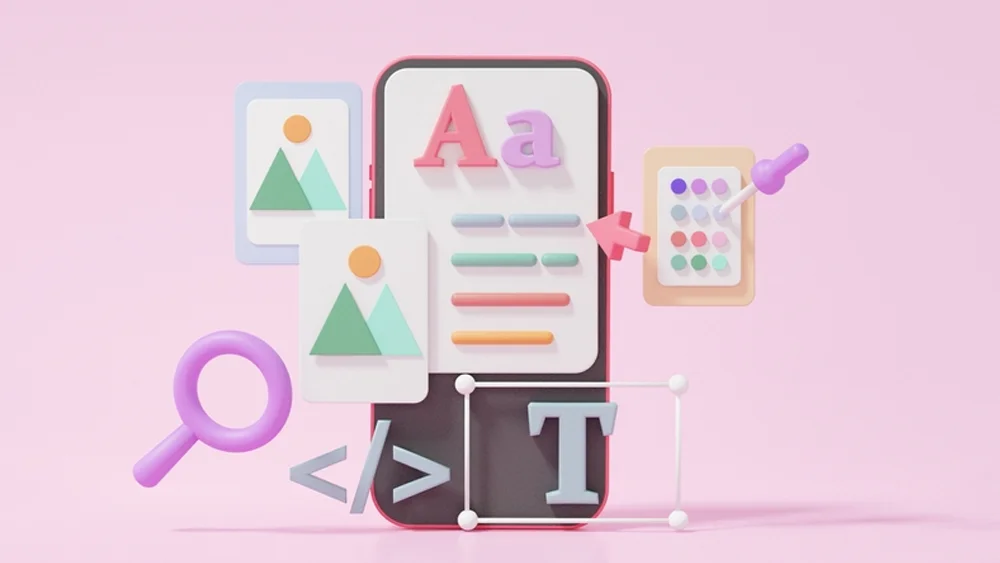It is always the little, small details that make a huge difference. Sometimes, the things that go unnoticed are the things that impact us the most. You could apply this to any situation in life. Not only could situations be affected by the smallest details, but did you know that the development process and UI/UX design could too? This might come as a surprise (or not). The app development process is so vast that what we know is so little compared to what we don’t. The same goes for UI and UX design. There are many elements in the UI and UX design that we interact with daily, yet we lack complete knowledge of them. In this article, we will get to unravel one of the mysterious elements of UI and UX design, which is micro-interactions.
We will dive deep into the world of micro-interactions and unveil everything about them in this comprehensive guide.
What are Micro-Interactions?
Is it okay for things to have one specific task or do only one thing? I mean, only a superhero can do this, so it is fine. There are many functions or elements in the application that have one single purpose; they are here to make this simple action, and this simple action only. And these are what UI and UX designers call micro-interactions. They are simple and uncomplicated elements or events implemented in apps and are usually complementary to other elements.
Who doesn’t make a lot of mistakes while using an application for the first time, or even for the 500th time? You can press the wrong button, enter an incorrect input, and so on. After all, we are all humans. Well, why is this relevant to micro-interactions? Well, besides being simple elements, one of the main reasons why micro-interactions are implemented in applications. They provide some type of visual feedback to notify a user of an error or a mistake they have made. Sometimes words alone aren’t enough, so there must be some visuals to make it better.
Phases of Micro-Interactions and How Do They Work
The process of interacting with micro-interactions has certain phases or parts to be completed. So, let us explore the four phases that explain how these elements work.
Trigger
The first phase, or part, is the trigger. The trigger is a sort of stimulus that starts the whole process. They can be done from a user’s or a system’s side. However, they are often initiated by users in most cases.
Rule
In the second phase, the rule is what comes after the trigger. A rule is an action or order that must be accomplished after the user or system-initiated stimulus. In other words, it is the complete response from the application to what the user did, and the UX/UI designers are the ones who control it. Keep in mind that rules should be logical and make sense according to the trigger made to avoid user frustration.
Feedback
Feedback is the visual or auditory response that acknowledges the user’s action. It provides confirmation, helping users understand that their input was recognized and processed. Feedback is crucial for user engagement and satisfaction.
Loop or Modes
Loops or modes are two optional phases of micro-interactions, as they appear only in some cases and not all of them. They are also called the meta-rules. Both phases reflect how the micro-interaction would act after one or multiple uses. For instance, some interactions can run in loops, such as loading, and some have certain modes, like switching toggles.
Importance of Micro-Interactions
For UI:
Visual Hierarchy and Flow
As users progress through an interface, micro-interactions can assist in maintaining a consistent visual hierarchy and flow. They might draw attention to critical components or processes in the user journey.
Feedback and Responsiveness
With micro-interactions, users can get immediate rewards for their efforts. By showing users that their input was noticed, this responsiveness helps decrease confusion and makes the interface more straightforward. They also convey advantages or the activities that may be taken inside the interface, to the user.
Humanizing the Interface
Microinteractions can give the interface a little character, making it seem more approachable and genuine. This can contribute to a good response to emotions from users.
Usability and Learnability
Microinteractions that are thoughtfully crafted can greatly improve the usability of an interface. They help improve the system’s usability and accessibility by giving users visual indications regarding how to communicate with different elements.
For UX:
User Guidance and Education
Microinteractions can direct users throughout various phases, signaling the next stages or shifting attention to essential elements. New users will greatly benefit from this explanation of the interface’s workings as they are brought up to speed.
Building Emotional Connections
Emotional bonds between users and a digital product can be enhanced through the use of micro-interactions. A well-planned and executed micro-interaction can elicit a favorable emotional response, making the user’s experience more satisfying and memorable.
User Satisfaction and Retention
When users have a positive experience, their satisfaction increases, which is what well-designed micro-interactions do. Users who are pleased with what they are using are more inclined to make repeated purchases and repeat use.
Consistency and Branding
The interface feels more cohesive and on-brand when micro-interactions are used consistently throughout. These touchpoints serve to establish brand recognition and consistency throughout the user experience.
Enhanced Usability
A more user-friendly interface is the result of multiple micro-interactions that work together smoothly. They can make user functions more efficient by simplifying procedures, emphasizing vital information, and so on.
User Control and Empowerment
Microinteractions that are responsive to user input foster a feeling of empowerment and control. This sense of empowerment is crucial to a satisfying user experience because it gives people confidence that they can take control of the interface and successfully complete tasks.
Types and Examples of Micro-Interactions
Pull To Refresh
Starting with the first example, which is the pull to refresh. The pull to refresh is a 100% microinstruction that has no function or action but to refresh a certain page for users. This action is triggered by a wipe gesture and is only user-initiated. Sometimes, some apps go the extra mile and add visual or audio effects for the micro-interaction to make it more engaging.
Example:
A simple example of the pull to refresh is the Pinterest app. Pinterest has a straightforward pull to refresh micro-interactions that is visually appealing as well. It appears as a small ball with dots revolving inside. The color changes from the dark to the bright theme.
Like Buttons
When we talk about micro-interactions, we have to mention the like button. The like button and also all kinds of social media interactions like the share button, favorites, and so on are some of the most used micro-interactions ever. They have a certain role, which is liking a post or any form of media and nothing else
Example:
The most popular example is Facebook. Facebook has introduced a lot to the world of micro-interactions with its advanced social media interactions. For instance, Facebook introduced an extension to the like button a few years ago that allows users to change the like to their state, like love or care.
Password Error
As we mentioned earlier, one of the microinteraction’s main purposes is correcting users and providing feedback. And that is why password errors are one example of micro-interactions. Password errors are now found in all apps, and that is logical because all apps have registration as their first step now. Password errors have one purpose, which is to provide users with feedback on the data input. This helps alert them when they provide incorrect information with a password, email, etc.
Swipe Animation
The last interaction on this list is the swipe animation. Swipe animation is somewhat new to the world of micro-interactions, as it has appeared in a new category of applications. They can also be implemented in places like navigation, where they would have different functions but also serve one action. The swipe animation provides users with feedback on choosing a specific element. For instance, they are used in apps like quizzes and act when a student chooses one of two answers.
Example:
Tinder is one of the most popular apps that uses swipe animation as its main function and part of the app. The swipe animation helps people when swiping left and right on potential dates and it acts when there is a match.
Tips and Tricks to Effectively Include Micro-Interactions In Your App
Incorporating micro-interactions into your app is crucial for enhancing user engagement and satisfaction. To effectively integrate these subtle design elements, consider the following tips and tricks:
Understand the User Context
First, understand the user context to identify optimal touchpoints. Before going in with implementing micro-interaction, you have to understand the user’s journey and experience it. This will help you identify the right places where these elements might add value to the whole app.
Serve a Meaningful Purpose
Ensure each micro-interaction serves a meaningful purpose. Purposeless micro-interactions can do more harm than good, as they cause user frustration. That is why you can’t implement micro-interactions for the sake of implementing them. You have to have a well-structured plan of places and points where these elements would be beneficial and help users.
Add an Element of Surprise
Add an element of surprise or delight to create a positive emotional connection. Having an unexpected something always matters when it comes to the user experience. Adding a surprising element or visual would be a great addition to a micro-interaction that could improve user engagement and increase satisfaction.
By implementing these strategies, you can create a more intuitive and enjoyable app experience, contributing to improved SEO rankings and increased user satisfaction.






